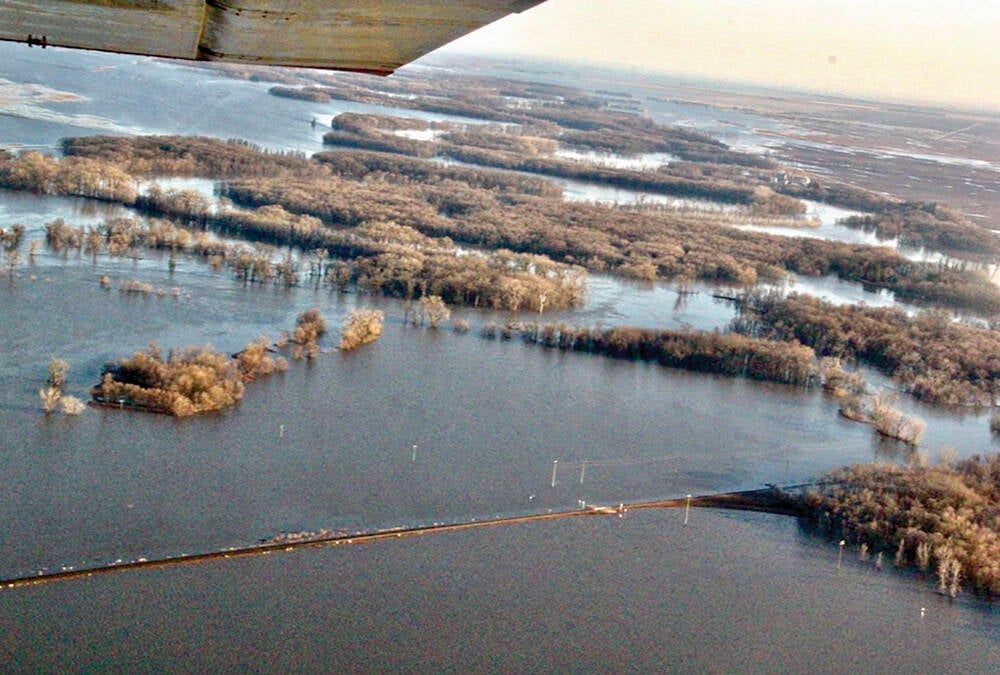Interest in horses is climbing, and opportunities for entrepreneurs and skilled trainers abound, according to prairie horse industry operators.
“The horse business is probably the best kept secret in Saskatchewan,” said Jim Graham, a livestock development specialist with Saskatchewan Agriculture.
According to Statistics Canada, the Canadian herd in 2006 numbered more than 450,000 horses and ponies, owned by 54,000 large and small operators.
The three prairie provinces account for more than half of that number, and the fastest growing trend is in full-service stables that keep, feed and train horses.
Read Also

Rural Manitoba resources slim on natural disaster planning
A study from Brandon University’s Rural Development Institute has found that many rural and small municipalities don’t have the staff or resources to make formal climate plans against natural disaster.
Good looking colts and fillies are worth up to $1,000 each, said Graham, and given the time and skill needed to train a top-notch mount, its value could exceed $5,000 by the time it reaches the sales ring as a finished three-year-old mount.
Graham said that every year, 5,000 to 10,000 working horses are sold in Saskatchewan.
It’s no surprise that Alberta, the heart of cowboy country, has the largest horse population in the country, with about 155,000 head.
Lindy Barron, who along with her husband operates Barron-Echlin Stables in Claresholm, Alta., said more people from different backgrounds regard equine sports as a rewarding way to spend their free time.
“We can hardly keep up. We need more trainers,” she said.
For years, their operation, about 130 kilometres south of Calgary, has had a waiting list of would-be students without spending dollars on advertising.
Their clientele is made up mainly of horse enthusiasts who want to learn how to ride cutting horses or improve their team penning skills. Others want their horses honed to perfection, but don’t have the time or talent to do it themselves.
Some are ranchers and others own acreages where they keep their horses, but surprisingly, a lot of city slickers are paying substantial sums to indulge a passion for riding.
“I think you’ll find that’s the biggest client base anywhere.”
Barron, who is from the United States, has been training horses for team penning and ranch work for more than 30 years. At any given time, their operation hosts about 15 horses in training, along with 30 head of their own stallions, colts, fillies and brood mares. Up to five horses are boarded for “valued clients,” but their focus is training.
Customers pay $700 a month to leave their horses at Barron-Echlin Stables, where they are cared for, exercised and trained to work cattle. Farrier and vet treatments are extra.
Alberta’s oil boom might account for some of the strength in the training and stabling industry in recent years, but Barron said the rising level of skill in providing services to horse owners has also come into play. Even the horses have gotten smarter, Barron added.
“The horses are bred better these days and they’re easier to train. They’re better minded, most of them,” she said.
Barron-Echlin Stables is always on the lookout for horse trainers who are dependable and knowledgeable. She urged young people starting out in the business to get their foot in the door by working for an established trainer with a good reputation.
“We look for people who are like ourselves: honest and hardworking and not brutal,” she said. “They have to be good with people and not just horses, because it’s a people industry.”
Manitoba Horse Council executive director Sheilagh Antoniuk said that local boarding stables are booked solid as interest climbs from youths, and especially women in their 50s. The ratio in the council membership is roughly 70 females to 30 males.
To accommodate the demand from baby boomers who have the time and money to spend on their equestrian dreams, the council has created new award categories for senior members.
“We are definitely seeing that dynamic taking place. With average membership age, it gets skewed because of pony club and all the kids, but we’re getting more of the older folks coming back to ride,” Antoniuk said.
The range of activities has grown from the old standbys of competitive jumping and driving, to trail riding, marathon and western cutting.
“Stables are in big, big demand. People might have an acreage, but often they don’t have a barn,” she said.














